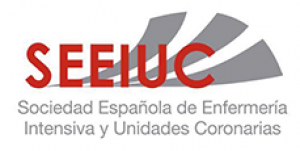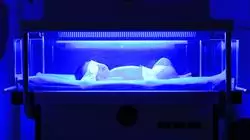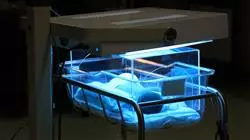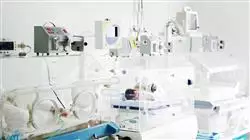
Certificate
Scientific endorser

The world's largest faculty of nursing”
Description
With the Professional Master's Degree in Neonatal Intensive Care and Neonatal Nursing you have the opportunity to update your knowledge in a practical way and without renouncing the maximum scientific rigor, to incorporate the latest advances in newborn nursing care in the Neonatal Intensive Care Unit"

Neonatology is the continuously evolving speciality within pediatrics, that focuses on the first month of life of a newborn. In recent years, new specialised units have been created in the majority of maternity and children’s hospitals, equipped with the latest technology to provide quality care. This has contributed, to a large extent, to the decrease in neonatal morbidity and mortality. It is vital that the staff performing their duties in these units are trained and up-to-date on the latest scientific evidence.
However, university programs in neonatology are very scarce, which is why it’s necessary to implement training programs that offer health care professionals the possibility to update and broaden their knowledge and skills, in order to provide safe and high-quality nursing care for newborns.
It should also be noted that there are no other postgraduate programs like this available at a national level. Its broad and in-depth content makes this the benchmark program in the discipline. The different modules are taught in sessions with an eminently practical approach, using the latest educational technology, which allows for learning in a practical way, adapting to the needs of the professional. Therefore, you will be able to study this Professional Master’s Degree in a 100% online format, which means this program is even compatible with a full-time job.
Improve the care of your patients with training offered by the professional master’s degree in Neonatal Intensive Care and Neonatal Nursing"
This professional master’s degree in Neonatal Intensive Care and Neonatal Nursing contains the most complete and up-to-date scientific program on the market. The most important features of the program include:
- More than 100 clinical cases presented by experts in the different specialties. The graphic, schematic, and practical contents with which they are created provide scientific and practical information on the disciplines that are essential for professional practice
- The latest information on the nursing care of a newborn patient in intensive care
- Presentation of practical workshops on procedures, nursing care and diagnosis and treatment techniques
- An algorithm-based interactive learning system for decision-making in the clinical situations presented throughout the course
- Practical guides on different pathologies. These guides follow the scientific and pedagogical criteria of the main scientific reference
- All of this will be complemented by theoretical lessons, questions to the expert, debate forums on controversial topics, and individual reflection assignments
- Content that is accessible from any fixed or portable device with an Internet connection
This professional master’s degree is the best investment you can make when selecting a refresher program, for two reasons: in addition to updating your knowledge in neonatology, you will obtain a Professional Master's Degree from TECH Technological University"
Its teaching staff includes, renowned specialists in the field of neonatology, who bring the experience of their work in the country’s leading medical centres to this program.
The multimedia content developed with the latest educational technology will provide the professional with situated and contextual learning, i.e., a simulated environment that will provide an immersive training program to train in real situations.
This program is designed around Problem-Based Learning, whereby the professional must try to solve the different professional practice situations that arise throughout the academic program. In order to do this, the nursing professional will be assisted by an innovative interactive video system, created by renowned and experienced experts in treating critical neonatal patients and with extensive teaching experience.
Increase your professional opportunities by taking the professional master’s degree in Neonatal Intensive Care and Neonatal Nursing"

It includes real clinical cases to bring the development of the program closer to everyday practice"
Objectives
This professional master’s degree is oriented towards effectively updating nurses’ knowledge of the procedures for dealing with a newborn, in order to provide quality care based on the latest scientific evidence that guarantees patient security.

This refresher program will generate a sense of security when providing neonatal care, which will help you grow both personally and professionally”
General Objective
- Allow the nursing professional to gain up-to-date knowledge of the procedures for optimal care of a newborn. This knowledge should enable the stabilization, nursing diagnosis and care of neonates who routinely require intensive care to be addressed in a current, evidence-based approach
Specific Objectives
Module 1. Important Aspects of Neonatology
- Categorize neonatal stages, as well as neonatal stages by gestational age and neonatal stages by weight at birth
- Determine the differences which exist in the pediatric age group between a newborn, a child and an adolescent
- Revise the anatomical and physiological characteristics of a normal newborn
- Establish the techniques for measuring the somatometry of a newborn, as well as its morphological and physiological characteristics
- Assess the complete examination, sequence of physical examination and complete physical examination of the newborn, focusing primarily on the head and neck region, trunk region and extremities region
- Describe the process of a complete neurological examination on a newborn
- Evaluate the structure and organization of a Neonatology Service, as well as its location, the necessary equipment and materials; and the necessary human resources
- Acquire up-to-date knowledge of the arrival of a newborn in the neonatal ward, the admission criteria, its objectives and the necessary nursing interventions
- Incorporate new techniques in the physical examination of a newborn on its arrival in the neonatal ward
Module 2. Admission of a Newborn in the Neonatal Ward or in the NICU
- Determine how to structure a neonatal intensive care unit (NICU), as well as the calculation and arrangement of the cribs, the necessary physical space needed, the necessary equipment and materials; and the necessary human resources
- Identify the profiles and roles of the "nursing team" as well as its operating system: Primary Nursing
- Describe the guidelines for drug administration in neonatology
- Establish the criteria and objectives for admission of a newborn to the NICU; as well as the necessary nursing interventions
- Identify and classify the types of neonatal transport, its objectives and its purpose
- Select the necessary team and equipment to provide appropriate neonatal transport
- Acquire up-to-date knowledge of the therapeutic measures for treating pain in newborns, as well as how to manage the pain in some of the procedures in the NICU
Module 3. Neonatal Resuscitation
- Form a resuscitation team and select the necessary equipment to perform neonatal resuscitation
- Gain up-to-date knowledge of resuscitation procedures
- Incorporate the latest information on the recommendations for neonatal resuscitation techniques, acknowledging the neonatal risk factors, as well as general procedures in the lead-up to birth
- Identify special resuscitation situations as well as the basic principles for a successful resuscitation
- Describe the possible complications that can arise during neonatal resuscitation
Module 4 Pharmacology in Neonatology
- Incorporate the basic principles of newborn sedation, anesthetic drugs and sedative/hypnotics into nursing
- Incorporate the principles of drug administration in the Neonatal Unit, as well as the use of the different routes: enteral, rectal, intramuscular, subcutaneous and intravenous routes, into nursing practice
- Differentiate the specific ways of administering drugs, the necessary equipment and its procedure
- Incorporate the different dosage guidelines applicable to nursing practice
- Gain up-to-date knowledge of the different drug administration routes and their characteristics
- Identify excipients used in neonatal formulations
- Gain up-to-date knowledge of the different therapeutic guidelines applicable to neonatology
- Classify and describe drug interactions, the different types of interactions that exist and how to prevention the risk of interactions
- Gain up-to-date knowledge on the use of drugs in neonatology
Module 5. Principles of Drug Administration and Vascular Access in Neonatology
- Acquire up-to-date knowledge of the necessary techniques for maintaining the line, removal of the line and the occurrence of possible complications
- Determine the precautions and contraindications as well as the appearance of possible complications that can occur with each of the specific ways of administering drugs
- Describe the different techniques to cannulate the umbilical artery or vein in a newborn
- Assess the contraindications and the complications of umbilical cannulation
- Gain up-to-date knowledge of the catheter removal procedure, the precautions which should be taken, its contraindications and complications
Module 6. Premature Child
- Describe the etiopathogenesis of prematurity
- Assess the differential diagnosis of premature newborns
- Incorporate the procedures for the reception of underweight premature newborns in the NICU
- Describe the clinical features and complications of the premature newborn
- Determine the different types of pathologies specific to a premature newborn including those relating to respiratory, neurological, ophthalmological, cardiovascular, digestive, immunological, metabolic, hematological and endocrinological pathologies
- Assess the complications, the management and prognosis of a premature newborn
- Differentiate the sequelae that could appear, as well as their monitoring
- Control all aspects of the premature newborn’s recovery period, the procedure for discharging them from hospital and their subsequent care
- Establish rules of conduct, nutrition, necessary pharmacological supplements, as well as neuropsychological and somatometric monitoring, and preventive measures against respiratory infections
- Acquire up-to-date knowledge of premature newborn vaccination programs
Module 7. Thermal Management, Pain Control and Sedation of the Newborn
- Describe thermal management in the newborn, its thermoregulation and the use of a neutral thermal environment
- Incorporate newborn temperature assessment guidelines into nursing practice
- Implement hypothermia in a newborn with hypoxic-ischaemic encephalopathy as a neuroprotective measure, as well as the neuroprotective mechanisms of action of hypothermia
- Differentiate the indications and contraindications of hypothermia
Describe the exit criteria once hypothermia has been initiated
- Assess pain control in a newborn as well as the short and long term consequences of the pain
- Evaluate the different techniques for measuring pain in a newborn
- Predict the onset of withdrawal syndrome in the newborn and how to manage it
Module 8. Water, Electrolyte and Metabolic Disorders of a Newborn
- Establish the management of fluids and electrolytes in the newborn, to maintain a hydroelectrolytic balance, controlling the insensible loss of water and electrolytes (sodium, potassium, calcium)
- Control the water balance in neonatals admitted to the intensive care unit
- Acquire up-to-date knowledge of newborn monitoring procedures
- Identify which are the main objectives for fluid management in newborns weighing less than 1.500g
- Establish the procedures for calculating water balance in a critically ill newborn
- Calculate insensible losses or insensible gains in a newborn with weight gain or weight loss
- Differentiate between very premature and hyperosmolar state
- Identify when fluids should be restricted in a very premature newborn
- Identify when the need for fluids should be increased in a very premature newborn
Module 9. Newborn Feeding: Breastfeeding/Formula Feeding and Feeding of the Hospitalized Infant
- Explain what a newborn diet consists of
- Describe the requirements and feeding objectives of the breastfeeding infant
- Gain up-to-date knowledge of the process and the benefits of breastfeeding
- Classify the types of feeding used in the Neonatal Unit and NICU such as enteral nutrition and parenteral nutrition
- Determine the indications and contraindications of enteral nutrition and parenteral nutrition
- Acquire up-to-date knowledge of recommendations for the use of both enteral and parenteral nutrition routes of administration
- Differentiate the components of parenteral nutrition
- Describe the preparation and administration of parenteral nutrition
- Gain up-to-date knowledge of the guidelines for the withdrawal of parenteral nutrition
Module 10. Nursing Interventions: Family Care, Perinatal Death and Neonatal Development
- Explain family-centred care, as well as the ways to promote and rebuild the family bond
- Evaluate the importance of family in the neonatal unit and NICU
- Establish coping strategies for perinatal death, the intervention of professionals if it occurs, the grieving process and the stages
- Relate the influence of the impact of the NICU environment on newborn development
- Target neonatal care which is focused on the development, as well as the interventions, regarding the macro- and micro-environment of the newborn
- Acquire up-to-date knowledge of the nursing staff's own involvement when discharging patients from hospital
Module 11. Respiratory Pathophysiology and Respiratory Disorders in Neonatology
- Identify the modalities of respiratory assistance
- Revise the process of lung development, lung embryology and lung anatomy
- Review the respiratory physiology of a newborn
- Assess the respiratory problems of a newborn
- Establish the involvement of nursing staff in treating a newborn with a respiratory disorder
- Describe the mechanical ventilation and non-invasive ventilation techniques, as well as the nursing care involved in mechanical ventilation and the ventilation modes
- Incorporate endotracheal intubation and extubation techniques
- Acquire up-to-date knowledge of the cricothyroidotomy or coniotomy procedures
- Describe the procedure to perform a tracheotomy
Module 12. Cardiac Disorders and Congenital Heart Disease in Neonatology
- Gain up-to-date knowledge of the cardiac massage technique
- Identify the differences in the response to a neonatal cardiopulmonary arrest and one in an older pedriatic patient
- Revise the general aspects of the cardiovascular system, embryology and cardiac anatomy
- Distinguish between the different types of congenital cardiopathies
- Evaluate the involvement of the nursing professional in treating a newborn with congenital cardiopathy
- Learn how to create a nursing care plan
- Gain an understanding of preoperative and postoperative care in cardiac surgery
- Gain up-to-date knowledge of the nursing procedure for addressing bacterial endocarditis
Module 13. Neonatal Neurological Disorders
- Revise the general aspects of neonatal neurology, embryology and the nervous system anatomy
- Acquire up-to-date knowledge of the intervention procedures in a newborn with neonatal seizures
- Identify the most common neurological pathologies: neonatal intracranial hemorrhages and hydrocephalus
Module 14. Neonatal Digestive Disorders
- Revise the general aspects of neonatal gastroenterology: embryology and the anatomy of the digestive tract
- Gain up-to-date knowledge of the procedures for handling nasogastric and orogastric tubes
- Describe the principal signs and symptoms of gastroesophageal reflux
- Identify the symptoms of esophageal atresia
- Determine how to treat necrotizing enterocolitis
- Incorporate Ostomy care techniques into nursing practice
Module 15. Hematologic Disorders in Neonatology
- Revise the general aspects of neonatal hematology
- Describe fetal hydrops
- Gain up-to-date knowledge of the range analysis of neonatal hyperbilirubinemia parameters
- Describe other pathologies of neonatal hematology: polycythemia and thrombocytopenia
- Acquire up-to-date knowledge of the indications of blood transfusion and its by-products in the neonatal period, as well as the technique for transfusion itself
Module 16. Renal Disorders in Neonatology
- Revise the general aspects of neonatal nephrology: embryology and anatomy of the renal system
- Gain up-to-date knowledge of the neonatal bladder catheterization technique
- Describe nephrological pathology in a newborn
- Initiate peritoneal dialysis in a newborn
Module 17. Neonatal Shock
- Describe the main signs of neonatal shock
- Differentiate the distinct phases of neonatal shock and the types of shock
- Identify clinical signs of neonatal shock
- Gain up-to-date knowledge on how to address neonatal shock, as well as the basics of its treatment
- Incorporate neonatal shock nursing interventions into nursing practice
- Explain the algorithm for managing neonatal shock
- Describe how neonatal sepsis can occur, its etiopathogenesis, etiology, clinical symptoms, diagnosis and treatment
Module 18. Neonatal Preoperative and Postoperative Care
- Establish nursing care in neonatal surgery: general preoperative and postoperative care
- Highlight the most common types of surgery: choanal atresia, esophageal atresia with tracheoesophageal fistula, diaphragmatic hernia, abdominal wall defects, necrotizing enteritis and imperforate anus
- Determine the nursing involvement required in neonatal preoperative and postoperative care
Module 19. General Skin Care in Neonatology
- Revise the general aspects of neonatal dermatology; its embryology and histiology
- Establish newborn skin care practices
- Differentiate the transient benign skin lesions: erythema toxicum neonatorum, transient neonatal pustular melanosis, milia, miliaria, neonatal acne, subcutaneous fat necrosis, mongolian or Baltz spot, telangiectatic nevus or maternal nevi etc.
- Identify the most common skin infections in newborns: oral candidiasis (thrush), neonatal cutaneous candidiasis, impetigo neonatorum, staphylococcal scalded skin syndrome and neonatal chickenpox
Module 20. Other Neonatal Pathologies: Metabolopathies, Chromosomopathies and Neonatal Oncology
- Differentiate the various metabolopathies
- Establish the different criteria for listing a metabolopathy in neonatal screening
- Acquire up-to-date knowledge of screening techniques, as well as the procedure to follow for the heel prick test
- Differentiate the types of screening for the various metabolopathies
- Distinguish the most frequent chromosomopathies
- Deal with neonatal oncology and the different types of tumors typical of the neonatal period: neuroblastoma, Wilms' tumor and teratomas

Make the most of this opportunity and take the step to get up to date on the latest developments in Neonatal Intensive Care and Neonatal Nursing”
Professional Master's Degree in Neonatal Intensive Care and Neonatal Nursing
At TECH Faculty of Nursing we want to facilitate the updating of the knowledge of healthcare professionals through this Professional Master's Degree in Neonatal Intensive Care and Neonatal Nursing, developed using the latest advances that allow optimal care of the newborn; especially in situations where intensive care is necessary. According to the World Health Organization (WHO), some 15 million premature infants are born each year; however, 75% of these babies are able to pull through thanks to the knowledge and consistent care of the healthcare personnel around them at the time of birth.
Course a Professional Master's Degree in Neonatal Intensive Care and Neonatal Nursing
To cope with the growing need for intensive care in newborn babies, especially when delivery takes place before 37 weeks of gestation, medical centers require specialized staff in neonatal nursing. Through our one-year, completely online Professional Master's Degree in Neonatal Intensive Care and Neonatal Nursing, you will become a professional in high demand by clinics and hospitals, prepared to respond to all kinds of difficulties before, during and after birth.
Study a postgraduate program in nursing completely online
If among your personal and work goals is to become a nurse with up-to-date knowledge, stand out above other nursing professionals, demonstrate your value to employers or patients and increase your chances of advancement in the health area that most interests you, it is essential to study this postgraduate program from TECH Technological University.






